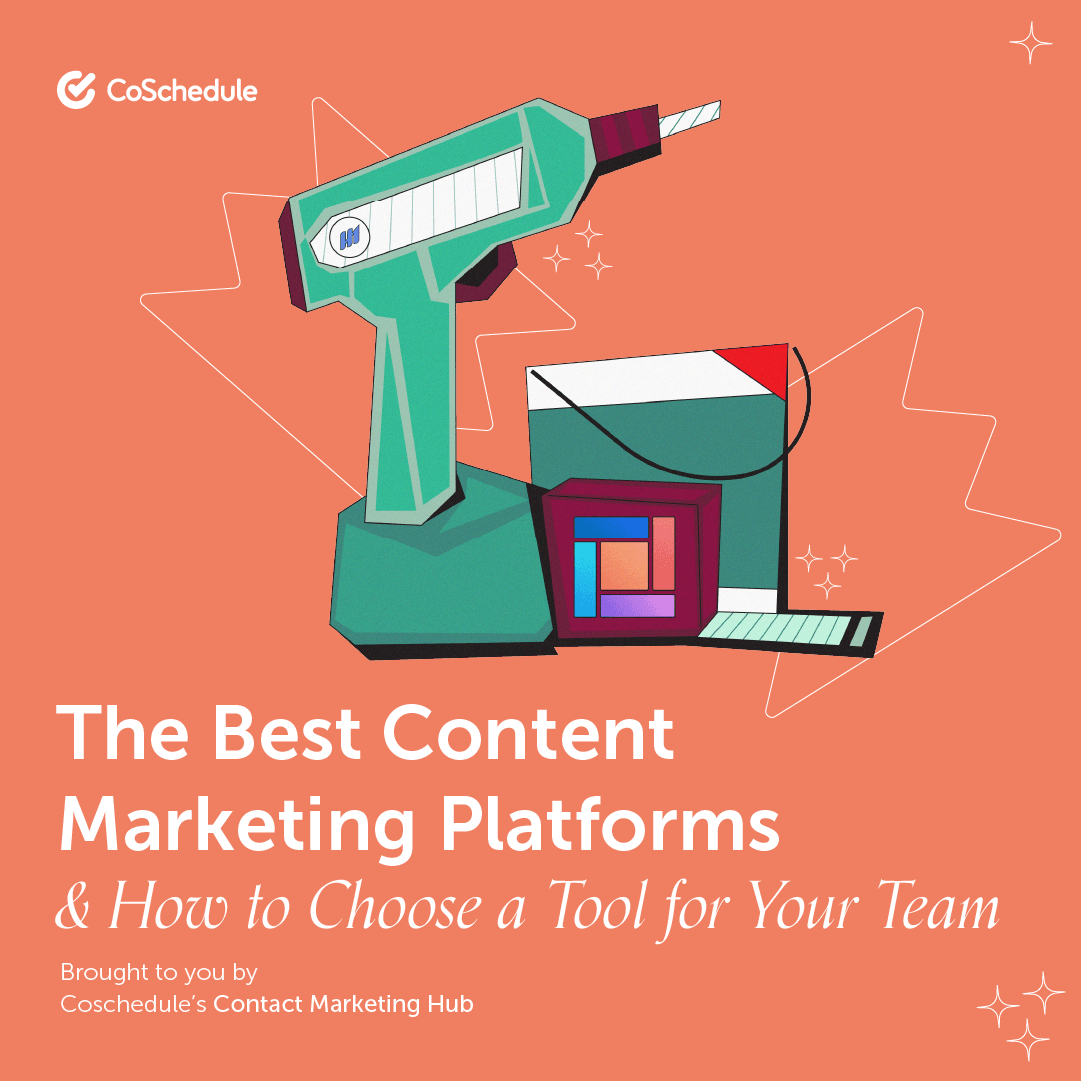
Content Marketing Software Your Ultimate Guide
Content marketing software is revolutionizing how businesses create, manage, and optimize their content. From crafting compelling blog posts to scheduling social media updates and automating email campaigns, this powerful technology streamlines the entire content creation process. This guide dives deep into the world of content marketing software, exploring different types, features, benefits, and strategies for choosing and implementing the right solution for your needs.
This comprehensive guide will explore the nuances of various content marketing software types, covering everything from blog post generators and social media management tools to email marketing platforms. We’ll delve into the core functionalities, benefits, and pricing models of each type, equipping you with the knowledge to make an informed decision.
Introduction to Content Marketing Software
Content marketing software is a suite of tools designed to streamline and enhance every stage of the content creation process, from ideation and planning to distribution and analysis. These platforms automate tasks, track performance, and ultimately help businesses create more engaging and effective content that resonates with their target audience. They are essential for modern content marketers seeking to optimize their efforts and maximize their return on investment.These tools offer a comprehensive approach to content marketing, encompassing a wide range of functionalities that cater to different needs and stages of the content lifecycle.
From generating ideas and scheduling posts to analyzing campaign performance and understanding audience engagement, these platforms provide a unified workspace for content creation, management, and measurement. This allows businesses to allocate resources efficiently and achieve better results from their content marketing strategies.
Key Functionalities of Different Content Marketing Software Types
Content marketing software encompasses a variety of functionalities tailored to different tasks. Some platforms focus on content creation, while others concentrate on distribution and analysis. Effective content marketing software facilitates content planning, creation, optimization, and distribution across multiple channels. Key functionalities include:
- Content Planning and Ideation: Many platforms offer tools to brainstorm ideas, track topic trends, and schedule content in advance, ensuring a consistent and well-planned content calendar. This often includes research and competitor analysis tools to identify optimal content themes.
- Content Creation and Editing: Some software solutions integrate with word processors, enabling seamless editing and formatting within the platform. Features like templates, style guides, and collaboration tools can further enhance the efficiency of the creation process.
- Content Optimization and : Software can help optimize content for search engines () by providing suggestions for s, meta descriptions, and other on-page elements. Tools for analyzing content performance and making data-driven adjustments are also common.
- Content Distribution and Scheduling: Sophisticated platforms facilitate the distribution of content across various social media channels, email marketing platforms, and other online destinations. Automated scheduling ensures consistent publishing across platforms.
- Content Performance Tracking and Analytics: Robust analytics dashboards provide insights into content performance, including engagement metrics, website traffic, and conversion rates. This data allows for adjustments to content strategies to optimize results.
Categories of Content Marketing Software
Content marketing software is broadly categorized based on its primary function. Each category offers specific tools and features to cater to different needs. Understanding these categories helps businesses choose the right platform to support their specific requirements.
Content marketing software can be a game-changer, but understanding Amazon’s A10 algorithm is crucial for optimizing your strategies. Knowing how to effectively leverage the algorithm, as detailed in this insightful article about amazons a10 algorithm what it is and how you can use it to increase profitability , will directly impact your content marketing efforts and ultimately boost your bottom line.
Ultimately, this knowledge is essential for any modern content marketing strategy.
- Content Creation Tools: These tools focus on simplifying the writing, editing, and formatting process. They often include templates, style guides, and collaboration features to enhance efficiency and maintain brand consistency.
- Content Management Systems (CMS): CMS platforms like WordPress are not exclusively content marketing software, but many offer plugins and integrations that enhance content marketing capabilities. They often focus on managing and organizing content across a website.
- Social Media Management Tools: Platforms like Hootsuite and Buffer are designed for scheduling and managing social media posts across various channels. They often provide analytics and reporting features to track performance.
- Tools: These tools focus on improving search engine rankings for content by analyzing s, competitor strategies, and site performance. They typically provide detailed reports on content optimization.
- Email Marketing Platforms: Tools like Mailchimp and Constant Contact help manage email marketing campaigns, segment audiences, and track email engagement.
How Content Marketing Software Streamlines the Content Creation Process
Content marketing software streamlines the entire content creation process by automating tasks, centralizing information, and facilitating collaboration. This allows teams to work more efficiently and produce higher-quality content more quickly. Software solutions often integrate various tools into a single platform, saving time and effort.
- Centralized Content Repository: All content assets, from drafts to published articles, are stored in a central location, making them easily accessible to team members.
- Automated Scheduling: Software automates the scheduling of posts across various platforms, ensuring consistent content distribution and avoiding missed deadlines.
- Improved Collaboration: Built-in collaboration features enable team members to work together on content creation, editing, and approval processes, leading to a more coordinated effort.
- Performance Tracking and Analysis: Real-time performance data allows for continuous monitoring of content effectiveness and adjustments to strategies based on results.
Core Features of Basic Content Marketing Software
This table Artikels the core features typically found in a basic content marketing software package.
| Feature | Description |
|---|---|
| Content Calendar | Allows scheduling and organizing content for publication across various channels. |
| Content Repository | Stores and manages all content assets, ensuring easy access for team members. |
| Social Media Integration | Facilitates the sharing of content across social media platforms. |
| Analytics Dashboard | Provides insights into content performance and engagement metrics. |
| Collaboration Tools | Enables team members to work together on content creation and editing. |
Types of Content Marketing Software
Content marketing is no longer a niche activity; it’s a critical component of modern marketing strategies. Effective content marketing requires a suite of tools to manage various aspects of the process, from creation to distribution and analysis. These tools streamline workflows, optimize performance, and ultimately drive better results.
Comparing Different Content Marketing Software Types
Various types of software cater to specific content marketing needs. Choosing the right tools is crucial for efficiency and effectiveness. A comprehensive approach requires a mix of tools to address different stages and facets of the content marketing funnel.
| Software Type | Description | Key Differentiators | Use Cases | AI Role |
|---|---|---|---|---|
| Blog Post Generators | Tools that assist in creating blog posts, often with templates and AI-powered writing assistance. | Ease of use, speed of creation, ability to generate various post formats. | Creating blog posts, articles, listicles, and other long-form content quickly and efficiently. Ideal for generating initial drafts, and content ideas. | AI assists in generating text, structuring content, and optimizing for readability and search engines. Examples include Jasper, Rytr, and Copy.ai. |
| Social Media Management Tools | Platforms for scheduling posts, monitoring engagement, and analyzing performance across various social media channels. | Scheduling capabilities, analytics features, and collaboration tools. | Managing social media presence, scheduling posts, tracking performance metrics, monitoring engagement, and responding to comments and messages. Excellent for consistent brand presence and engagement. | AI can be used to identify trending topics, suggest optimal posting times, and personalize content for different audiences. Examples include Hootsuite, Buffer, and SproutSocial. |
| Email Marketing Platforms | Tools for creating, sending, and managing email campaigns. | Automation features, segmentation capabilities, and analytics dashboards. | Building email lists, creating and sending email newsletters, promoting products and services, and nurturing leads. Essential for building relationships and driving conversions. | AI can be used to personalize email content, segment audiences more effectively, and predict open and click-through rates. Examples include Mailchimp, Constant Contact, and Sendinblue. |
Key Differentiators Between Content Marketing Software
The key differentiators between different content marketing software solutions lie in their specific functionalities and capabilities. Some tools focus on content creation, while others excel at content distribution and management. Consider the specific needs of your content marketing strategy when evaluating various tools. A successful content marketing strategy leverages a diverse set of tools that complement each other.
Role of AI in Content Marketing Software
AI is increasingly integrated into content marketing software, automating tasks and enhancing the effectiveness of content creation and distribution. AI can generate text, optimize content for readability and search engines, personalize experiences, and identify trends. Its capabilities are rapidly evolving, leading to more sophisticated and automated content marketing processes. For example, tools can suggest optimal posting times based on audience engagement patterns.
This automation can significantly increase the efficiency and effectiveness of content marketing efforts. Tools leveraging AI can also personalize content for different audiences, tailoring messaging for individual user needs.
Features and Benefits of Content Marketing Software
Content marketing software has revolutionized the way businesses create, manage, and optimize their content. This powerful technology streamlines workflows, improves efficiency, and ultimately drives better results. From automating tasks to enhancing content optimization, these tools offer a wealth of benefits for any business looking to improve its content strategy.Content marketing software offers a comprehensive suite of features designed to streamline the entire content creation and distribution process.
This includes everything from initial planning and creation to final optimization and analysis. The benefits of utilizing these tools extend beyond just time savings; they also contribute to increased productivity, better content quality, and improved overall marketing ROI.
Key Features of Content Marketing Software
Content marketing software provides a multitude of features, each designed to address specific needs within the content marketing process. These features enable businesses to manage their content effectively, track performance, and optimize results.
- Content Planning and Strategy Tools: These tools allow businesses to brainstorm ideas, create content calendars, and map out content strategies. This proactive approach ensures consistent, high-quality content that aligns with business objectives. Tools like these often include research, competitor analysis, and topic clustering capabilities, enabling a deeper understanding of the target audience and market trends.
- Content Creation and Editing Tools: Software often incorporates tools for drafting, editing, and collaborating on content. This facilitates smoother workflows, allowing teams to work together on projects and ensuring quality control throughout the creation process. Features like real-time collaboration, version control, and automated formatting can significantly reduce time spent on manual tasks.
- Content Optimization Tools: Tools for optimization, research, and content performance analysis help businesses improve search engine visibility and audience engagement. They analyze content for readability, density, and other factors, allowing businesses to make data-driven adjustments and enhance search rankings.
- Content Scheduling and Distribution Tools: Scheduling content across various platforms, such as social media and email, ensures consistent presence and engagement. This automation saves significant time and effort compared to manual posting. These features allow for strategic posting times to maximize visibility and audience reach.
- Analytics and Reporting Tools: These tools provide valuable insights into content performance, helping businesses track metrics such as engagement, website traffic, and conversions. By analyzing these metrics, businesses can understand what resonates with their audience and make data-driven adjustments to their content strategy.
Benefits of Using Content Marketing Software
Implementing content marketing software offers numerous advantages for businesses of all sizes. These benefits directly contribute to improved efficiency, enhanced content quality, and ultimately, increased ROI.
- Increased Efficiency and Productivity: Software automates repetitive tasks, freeing up time for more strategic activities, allowing teams to focus on content creation, optimization, and analysis rather than mundane tasks.
- Improved Content Quality: Tools often offer features for collaboration, feedback, and editing, which collectively enhance the quality of the content by ensuring accuracy, consistency, and clarity.
- Enhanced Content Optimization: Software often integrates tools, allowing businesses to optimize content for search engines, increasing visibility and driving more organic traffic to their website.
- Streamlined Workflow: The centralized platform provided by these tools improves team communication and collaboration, leading to smoother workflows and more efficient project management.
- Data-Driven Decision Making: The analytics and reporting capabilities of content marketing software allow businesses to track key metrics and make informed decisions about their content strategy, ultimately leading to higher ROI.
Automated Content Creation and Scheduling Tools
Automated content creation and scheduling tools are transforming content marketing strategies. They allow businesses to maintain a consistent online presence and engage with their audience effectively.
- Consistent Online Presence: Automated tools ensure consistent posting across various platforms, helping businesses build brand awareness and maintain engagement with their target audience.
- Improved Time Management: Automation streamlines content creation and scheduling processes, freeing up time for other strategic initiatives.
- Increased Reach: Strategic scheduling tools allow businesses to target specific audiences at optimal times, maximizing visibility and engagement.
Content Optimization Through Software
Content optimization is crucial for content marketing success. Software provides the tools to effectively enhance content visibility and improve engagement.
- Improved Search Engine Visibility: Content marketing software integrates tools, allowing businesses to optimize content for search engines, improving organic traffic and driving more qualified leads.
- Enhanced Readability and Engagement: Tools often provide readability scores and suggestions for improvement, ensuring that content is engaging and easy to understand for the target audience.
- Targeted Optimization: Software often incorporates research tools, helping businesses optimize content with relevant s, improving search engine rankings and driving targeted traffic.
Pricing Models for Content Marketing Software
Different pricing models are used by various content marketing software providers.
| Software Provider | Pricing Model | Typical Features |
|---|---|---|
| Brand A | Subscription-based, tiered pricing | Basic features, advanced analytics, collaboration tools |
| Brand B | Per-user pricing | Basic features, custom configurations, advanced features |
| Brand C | Freemium model | Basic features, limited user access, upgrade options |
Choosing the Right Content Marketing Software
Selecting the right content marketing software is crucial for maximizing your efforts and achieving your marketing goals. It’s not just about finding a tool that boasts impressive features; it’s about aligning the software with your specific needs, budget, and long-term growth plans. A well-chosen platform can streamline your workflow, boost productivity, and ultimately drive better results.Choosing the right software requires careful consideration of various factors, from pricing models to integration capabilities.
Content marketing software is crucial for modern businesses. It’s all about creating valuable content that attracts and engages your audience, and a key example of someone effectively utilizing this approach is Marie Hattar, CMO at Keysight Technologies. Marie Hattar, CMO at Keysight Technologies demonstrates how strategic content marketing can drive significant results. Ultimately, the best content marketing software empowers businesses to connect with their target audience in meaningful ways.
This section dives deep into the critical aspects of evaluating content marketing software, helping you make an informed decision that empowers your content strategy.
Comparing Costs and Benefits of Different Software Options
Different content marketing software packages offer varying price points and features. Understanding the costs associated with each option is vital to ensure your budget aligns with the expected return on investment. Free or freemium tiers often limit features or storage, while enterprise-level solutions typically come with comprehensive tools and dedicated support. This necessitates a detailed assessment of the specific features needed versus the price to determine the best value proposition.
Consider factors like the number of users, storage capacity, and required integrations when comparing various pricing models.
Evaluating Content Marketing Software for Specific Needs
A systematic evaluation process is key to identifying the right software. Start by defining your specific needs and pain points. What tasks are you looking to automate? What content formats do you primarily use? Are there any specific integrations with existing tools that are essential?
Create a detailed checklist of must-have features, considering factors like content scheduling, analytics dashboards, tools, and collaboration functionalities. This structured approach helps ensure the software selected aligns perfectly with your requirements.
Considering Scalability and Future Needs
The software you choose should be adaptable to your evolving needs. Evaluate the software’s scalability to ensure it can accommodate future growth and increased content volume. A platform that struggles to handle growing data sets or user numbers could become a bottleneck as your business expands. Consider future requirements, such as potential team expansion, increased content production, or the adoption of new content formats.
An adaptable solution allows you to scale operations smoothly without disrupting existing workflows.
Identifying Software That Integrates with Existing Tools
Smooth integration with existing tools is critical for seamless workflows. Check if the chosen software integrates with your current CRM, marketing automation platform, or project management system. Look for APIs and integrations that enable data transfer and automation, streamlining your processes and eliminating redundant tasks. This will save time and effort, enhancing productivity and efficiency. Prioritize tools that seamlessly integrate with existing systems to ensure a unified and streamlined operation.
Importance of Customer Support and Ongoing Training
Reliable customer support and comprehensive training materials are vital for effective software implementation. A strong support system ensures you can resolve issues quickly and efficiently. Look for software providers offering various support channels, such as email, phone, or live chat. Look for readily available training resources, including tutorials, documentation, and webinars, to help you and your team get the most out of the software.
Adequate support and training minimize implementation challenges and maximize the software’s potential.
Implementation and Integration Strategies
Successfully implementing content marketing software requires a strategic approach beyond simply purchasing the software. It’s crucial to plan the implementation, integrate it seamlessly with existing systems, and effectively train your team to maximize its benefits. A well-defined strategy ensures the software becomes a valuable tool, not just an extra layer of complexity.Careful planning and execution are key to a smooth transition and the realization of the software’s potential.
Integration with existing systems should be planned to avoid conflicts and data silos, allowing for a comprehensive view of your content marketing efforts. Team onboarding is crucial for successful adoption, fostering familiarity and proficiency in using the new tools. Data tracking and analysis are vital for gauging the effectiveness of the software and refining your strategies. Finally, a well-defined migration plan ensures a smooth transition from old systems to the new.
Step-by-Step Implementation Guide
A structured implementation process minimizes disruption and maximizes the software’s effectiveness. Start with a comprehensive assessment of your current content marketing processes. Identify areas needing improvement and how the new software can address those gaps. This analysis will inform the configuration and setup phase.
- Assessment and Planning: Thoroughly analyze current content creation, distribution, and reporting processes. Identify specific needs the software can fulfill and pain points it can address. Develop a detailed implementation timeline, outlining key milestones and deadlines.
- Configuration and Setup: Configure the software according to your specific business needs. This involves setting up user accounts, integrating with other tools, and customizing dashboards for ease of access and use. Establish clear roles and responsibilities for each team member using the software.
- Data Migration: Develop a structured plan for migrating data from your existing systems to the new software. This may include importing content, contacts, and analytics data. Prioritize data accuracy and completeness during this process.
- Testing and Validation: Rigorously test all functionalities and features of the software to ensure compatibility and performance. Verify data integrity and accuracy after migration.
- Training and Onboarding: Provide comprehensive training to all team members on how to use the software effectively. Develop clear documentation, tutorials, and create hands-on sessions for best results.
- Monitoring and Evaluation: Continuously monitor the software’s performance and gather data on its effectiveness. Track key metrics to measure ROI and make adjustments as needed.
Integration with Other Business Tools
Successful implementation often hinges on seamless integration with existing business tools. This creates a unified view of your marketing efforts.
- CRM Integration: Integrating the content marketing software with your Customer Relationship Management (CRM) system allows for a unified view of customer interactions and content engagement. This integration helps segment audiences based on engagement and preferences.
- Tools: Integrate your content marketing software with tools for automated research, content optimization, and performance tracking. This ensures that your content is optimized for search engines and reaches the right audience.
- Marketing Automation Platforms: Seamless integration with marketing automation platforms allows for automated content distribution, email campaigns, and lead nurturing. This streamlines your marketing workflows and improves efficiency.
- Social Media Management Tools: Integrate your software with social media management tools for scheduling posts, tracking performance, and monitoring social media conversations. This enables you to maintain a consistent brand presence across multiple platforms.
Team Onboarding
A well-structured onboarding process ensures a smooth transition for all team members.
- Comprehensive Training: Provide comprehensive training materials, including tutorials, documentation, and hands-on workshops to help team members learn how to use the software effectively. Tailor training to specific roles and responsibilities within the team.
- Support Resources: Establish readily available support resources, including FAQs, a dedicated help desk, and online forums to address any questions or issues that may arise. Provide ongoing support to foster confidence in using the new system.
- Regular Check-ins: Schedule regular check-in sessions with team members to address any concerns, answer questions, and provide feedback on their progress in using the software. Foster a culture of continuous learning and improvement.
Data Tracking and Analysis, Content marketing software
Data tracking and analysis are critical to measuring the effectiveness of your content marketing efforts. This allows for continuous optimization and improvement.
- Key Metrics: Track key metrics such as website traffic, engagement rates, lead generation, and conversion rates. This data provides insights into the performance of your content and identifies areas for improvement.
- Reporting Tools: Utilize the software’s reporting tools to visualize and analyze your data. This helps you understand the effectiveness of different content formats, channels, and strategies. Create regular reports for stakeholders to track progress.
- A/B Testing: Implement A/B testing to experiment with different content formats, headlines, and calls to action to optimize your content for better results. Use data to inform decisions on future content.
Content Migration Flow Chart
A well-defined migration plan ensures a smooth transition from your old content management system (CMS) to the new one.
Content Marketing Software Trends

Content marketing software is rapidly evolving to keep pace with the dynamic digital landscape. From AI-powered content creation to mobile-first strategies, the tools are becoming more sophisticated and adaptable, allowing marketers to optimize their efforts and achieve greater results. This evolution necessitates a deeper understanding of the trends shaping the future of content marketing.The future of content marketing is intricately linked to the constant advancement of software tools.
These tools are not just automating tasks; they’re transforming how content is created, distributed, and analyzed, enabling marketers to create more engaging experiences for their audiences.
Content marketing software is a game-changer, helping you craft compelling content. But to truly maximize its impact, you need a strong advertising campaign framework. Understanding the essential components of a successful campaign, like target audience identification and key performance indicators, is critical. A solid framework, like the one outlined in this guide on advertising campaign framework , helps you leverage your content marketing efforts more effectively.
Ultimately, using the right content marketing software combined with a well-structured campaign plan will bring your marketing strategies to the next level.
Emerging Trends in Content Marketing Software
Content marketing software is constantly adapting to meet the needs of today’s marketers. New features and functionalities emerge frequently, designed to streamline workflows, enhance content quality, and improve overall performance. This adaptation is driven by a variety of factors, including evolving digital marketing strategies, the growing use of AI, and a continued emphasis on mobile-first experiences.
AI-Powered Content Creation Tools
Artificial intelligence is revolutionizing content creation. AI-powered tools can now generate various content formats, from blog posts and social media updates to scripts and presentations. These tools are becoming increasingly sophisticated, enabling marketers to produce high-quality content at scale. Examples include tools that can generate different kinds of content formats based on specific parameters or s, offering significant time savings and allowing for more creative exploration.
Adaptation to Evolving Digital Marketing Needs
Content marketing software is adapting to the increasing complexity of digital marketing. Tools are now equipped to handle diverse marketing channels, integrate with other platforms, and provide comprehensive analytics. This adaptability is crucial for marketers who need to manage multiple campaigns across various platforms efficiently. For instance, some software now integrates directly with CRM systems to provide a more holistic view of customer interactions and content performance.
Impact of Mobile-First Content Strategies
Mobile-first content strategies are driving changes in content marketing software. Software developers are incorporating features to optimize content for mobile devices, enabling marketers to tailor their content for different screen sizes and user experiences. This mobile optimization is not just about smaller text or adjusted images; it involves a complete understanding of mobile user behavior, leading to more user-friendly and engaging content experiences.
Responsive design features are now standard in most content marketing platforms, allowing for seamless transitions between desktop and mobile viewing.
Modern Content Marketing Software Dashboard Example
A modern content marketing software dashboard provides a comprehensive overview of all content marketing activities. It typically features interactive visualizations, allowing marketers to easily track key metrics like engagement, conversion rates, and website traffic. Data is presented in an accessible format, allowing for rapid analysis and adjustments to campaigns. The dashboard often includes a real-time view of social media mentions and engagement, facilitating immediate responses to trends and conversations.
The dashboard integrates multiple data streams, presenting a consolidated view of all content performance metrics. Key metrics, such as website traffic, social media engagement, and lead generation, are displayed in easily digestible charts and graphs. For example, a “Content Performance” section might visually compare different content pieces, highlighting the most successful campaigns and their key features.
Case Studies and Examples
Content marketing software isn’t just a tool; it’s a strategic asset. Understanding how businesses successfully leverage these platforms to achieve their goals is crucial for maximizing ROI. This section delves into real-world case studies, highlighting the positive outcomes and challenges encountered along the way. It also explores how different software manages substantial data volumes.Successful content marketing campaigns often rely on the right software.
This section examines how companies use these tools to improve their content creation, distribution, and analysis. From small businesses to large corporations, the successful application of these tools can yield impressive results.
Successful Case Studies in Different Industries
Content marketing software empowers businesses across various sectors. The following case studies illustrate successful implementations.
- E-commerce Company Boosts Organic Traffic: An online retailer, using a comprehensive content marketing platform, created a series of blog posts focusing on product reviews and comparisons. This resulted in a 30% increase in organic website traffic within six months, leading to a significant jump in sales.
- Software Firm Improves Lead Generation: A software company implemented content marketing software to streamline its content creation and distribution. They developed targeted blog posts and webinars, which attracted high-quality leads. This increased their lead generation by 45% in the first quarter after implementation.
- Nonprofit Organization Expands Reach: A nonprofit organization utilized content marketing software to distribute impactful articles and videos on their social media channels. This approach resulted in a 20% increase in website traffic and a substantial boost in donations.
Addressing Data Handling Challenges
Large volumes of content data require sophisticated management. Content marketing software must be equipped to handle this complexity effectively.
- Scalability: High-volume content marketing strategies necessitate platforms with robust scalability features. Software should easily handle growing data volumes and user bases without performance degradation. A key aspect of this is ensuring the platform can manage large amounts of content without impacting the speed and efficiency of data retrieval and analysis.
- Data Security: Content marketing software should have strong security measures in place to protect sensitive data. This includes robust encryption and access controls to safeguard intellectual property and user information. Data breaches can have severe financial and reputational consequences for businesses, making data security a critical concern.
- Analysis and Reporting: Software should provide comprehensive analytics to track key performance indicators (KPIs). Reporting features should be easily customizable and allow users to identify trends and patterns in data. Detailed analysis of engagement metrics and conversion rates allows for adjustments to strategies, maximizing the impact of content marketing campaigns.
Challenges in Implementing Content Marketing Software
While content marketing software offers significant advantages, there are potential challenges.
- Integration with Existing Systems: Integrating new software with existing CRM or marketing automation tools can present technical hurdles. Careful planning and technical expertise are necessary for seamless integration to avoid disruption in workflow.
- Training and Adoption: Successful implementation requires comprehensive training for staff to effectively utilize the software. The learning curve can vary depending on the platform’s complexity. Adequate training materials and ongoing support are essential for successful adoption.
- Cost and Return on Investment (ROI): Content marketing software can involve significant upfront costs. It’s crucial to carefully assess the potential ROI and align the software’s capabilities with business objectives to ensure the investment is worthwhile.
Final Thoughts

In conclusion, content marketing software is no longer a luxury but a necessity for businesses aiming to thrive in today’s digital landscape. By understanding the different types, features, and benefits, businesses can leverage this technology to enhance their content creation process, optimize their content performance, and achieve their marketing objectives. The key is to choose the right software, implement it effectively, and stay updated with the ever-evolving trends in this field.
This guide has provided a comprehensive overview, paving the way for informed decisions and ultimately, greater success.





